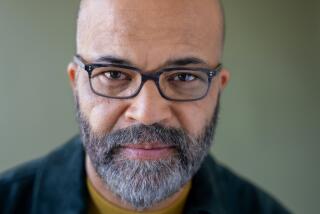Wrights Had the Right Stuff for Flight Success
- Share via
KILL DEVIL HILLS, N.C. — The pairing might have seemed odd, but in the end, it was perfect: two bicycle-building brothers from Ohio who dreamed of taking flight and the hardscrabble watermen living on an isolated chain of islands off the North Carolina coast.
Wilbur and Orville Wright knew that they needed control -- a way to control machines in the air, and control over who knew about their experiments in flight. Their research led them in 1900 to Kill Devil Hills, a barren stretch of sand dunes four miles south of the village of Kitty Hawk and about 100 miles south of Norfolk, Va.
The area offered just what they needed for their early experiments with kites and gliders: steady, stiff winds; high dunes from which to launch their aircraft; plush sand for safe landings, and privacy to protect them from gawking critics -- just a few people lived on the Outer Banks 100 years ago.
Chicago was another prospect, one that was both windy and much closer to the Wrights’ hometown of Dayton, Ohio. But there was a problem.
“Chicago was a metropolis and they didn’t want a lot of people hanging around making fun of them, grown men playing with kites and gliders,” said Darrell Collins, a National Park Service historian who works at the Wright memorial.
The Outer Banks residents of a century ago had their own doubts. But they warmed to the brothers, some even pitching in to help pull the Wrights’ gliders up the steep dunes. Each fall, as the brothers came for another round of experiments, they shared dinners with the locals and once persuaded one to mend their torn glider wings.
By the end of 1902, when the Wrights set world records for gliding, the inventors believed that they were ready to try powered flight. They returned the following year with an engine attached to a modified version of their glider.
Their first attempt to fly came Dec. 14, 1903, according to a National Park Service history by William R. Chapman and Jill K. Hanson. The result: a crash that required a day and a half’s worth of repairs.
The brothers put off testing on the afternoon of Dec. 16 because the winds were too strong. They were even stronger the next day, but the brothers -- eager to make a successful flight before they had to leave for the year -- decided to go ahead anyway.
At 10 a.m. Dec. 17, the Wrights notified the crew of the Kill Devil Hills Lifesaving Station that they intended to try again. Three members of the crew and two other local men helped move the plane from its hangar to its wooden launching rail.
The flight began at 10:35 a.m. with Orville as the pilot and Wilbur holding the right wing for balance.
The 600-pound plane moved down the rail slowly, eased into the air under its own power and rose 10 feet into the air.
The first flight lasted just 12 seconds and covered about 120 feet.
The brothers flew three more times that day, recording progressively longer flights -- 175 feet, 200 feet and 852 feet. The last flight at noon, with Wilbur at the controls, ended with a crash landing. Further damage, when a gust of wind blew the parked glider over, ended the experiments for the year.
Despite the mutual admiration that had developed between the Wrights and their hosts, the brothers decided to leave behind the now unnecessary winds and dunes of Kitty Hawk in favor of a spot closer to home. They didn’t need high ground from which to launch gliders and the strong winds now complicated their efforts.
They couldn’t replicate the isolation and privacy that they had enjoyed on the island, however. Their experiments in 1904 and 1905 in a friend’s cow pasture near Dayton drew unwanted strangers, many of whom tried to photograph the flying machine.
The Wrights painted the plane silver to hide its details while they continued to pursue a patent. But, unable to adequately protect their work, they quit flying for 2 1/2 years until 1908, when they had signed contracts to produce the plane for the U.S. government, Collins said.
That summer, they returned to the Outer Banks together for the last time to refine their flying ability in relative seclusion. But by then, word had spread of their new two-person glider and their planned experiments back where they had made history five years earlier.
At least two reporters from New York newspapers and another from London came to the Outer Banks to chronicle the experiments, Collins said.
“These reporters would get up early in the morning, before the sun would come up, and they would hide out in the distance,” Collins said. “They wouldn’t approach the camp, afraid the Wright brothers wouldn’t fly.
“Every day, these reporters were sending dispatches to newspapers all over America about the Wright brothers flying in Kitty Hawk.”
It was Wilbur Wright’s last visit to the Outer Banks before his death in 1912 of typhoid fever. But Orville Wright returned many times before his death in 1948 to see old friends who had helped him and his brother revolutionize the world.
“People on the Outer Banks at that time, this was a very hard way of life,” Collins said. “You had to be very dedicated and hard working to even survive.... The Wright brothers identified with the locals and eventually the locals identified with the Wright brothers because they saw how hard-working and dedicated they were.”
More to Read
Sign up for The Wild
We’ll help you find the best places to hike, bike and run, as well as the perfect silent spots for meditation and yoga.
You may occasionally receive promotional content from the Los Angeles Times.






